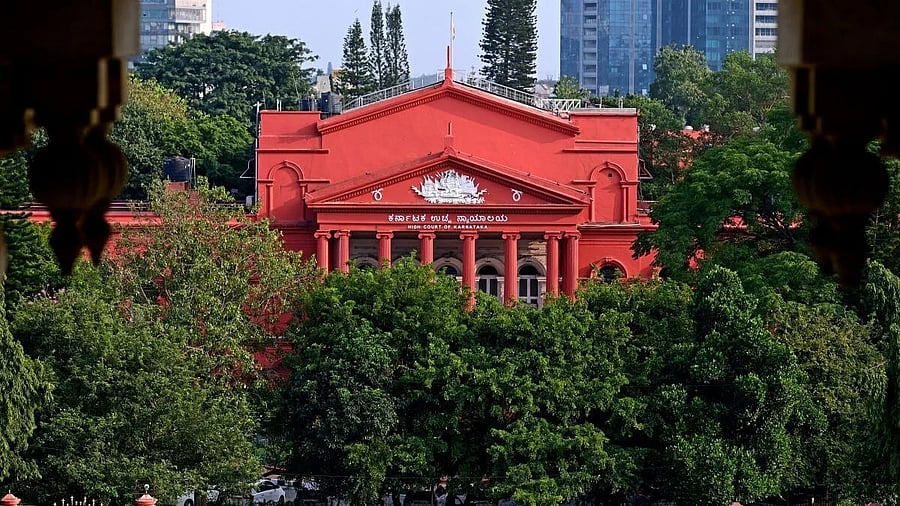
Image of Karnataka High Court.
Credit: DH Photo
The Karnataka government’s move to relocate the High Court from its current home in Cubbon Park to a new campus serves the dual purpose of catering to the judiciary’s needs and preserving the city’s ecological interests. For decades, Cubbon Park – one of Bengaluru’s few remaining green lung spaces – has been suffocated by the ever-expanding demands of the justice system operating within its bounds. Established in 1870 by the Acting Commissioner of Mysore, Sir John Meade, and landscaped by Major General Richard Sankey, then Chief Engineer of Mysore State, the park was named in honour of Sir Mark Cubbon, the longest-serving British Commissioner of the state. Now renamed Sri Chamarajendra Park, it has shrunk from the original 300 acres to less than 200 acres, with several public buildings and clubs eating into the area, eroding the ecological balance it was meant to preserve.
The present High Court building, completed in 1868, was called Attara Kacheri, as it housed 18 government departments. In 1956, the administrative offices moved to the newly constructed Vidhana Soudha, and Attara Kacheri became the seat of the Mysore High Court, later renamed the Karnataka High Court. The iconic red structure remains a landmark of colonial-era architecture, but was not designed to handle the thousands of advocates, litigants, and vehicles that now descend on it daily. The court’s growing footprint, including the 2011 allocation of 4.4 acres of Cubbon Park for parking, has drawn criticism. A proposal to construct a court annexe within the park after demolishing another heritage structure was dropped after widespread opposition from citizens and environmentalists. The current urgency for a modern judicial complex, voiced by the Bengaluru Advocates’ Association, is thus well-founded. Space constraints, inadequate facilities, and the heritage building’s structural limitations make relocation inevitable.
The search for a site within the Central Business District is a welcome step. Equally important is what happens after the shift. The building must be conserved as a protected heritage monument, and the parking area restored to the Horticulture Department. The complex could be repurposed as a museum, integrated with the popular Cubbon Park heritage walks, a fitting tribute to its historical significance. Bengaluru cannot afford to lose another inch of its green cover. Cubbon Park must remain a haven for flora, fauna, and citizens, not an administrative enclave of concrete and congestion. Shifting the High Court is not merely a logistical move; it is necessary for the preservation of Bengaluru’s green spaces and the smooth dispensation of justice.
